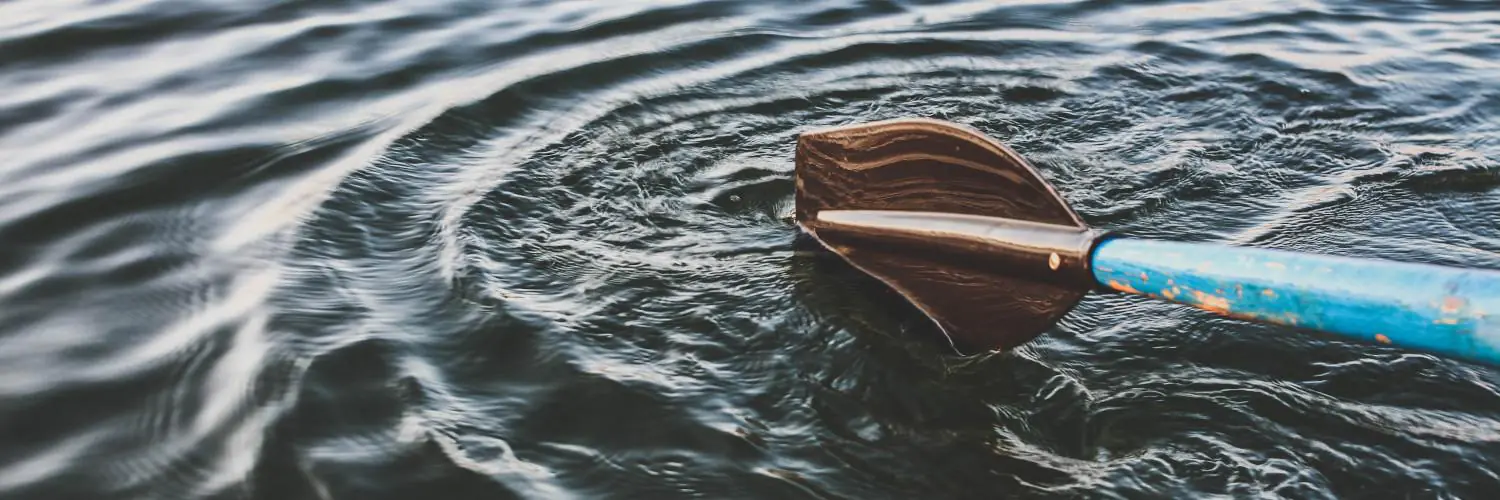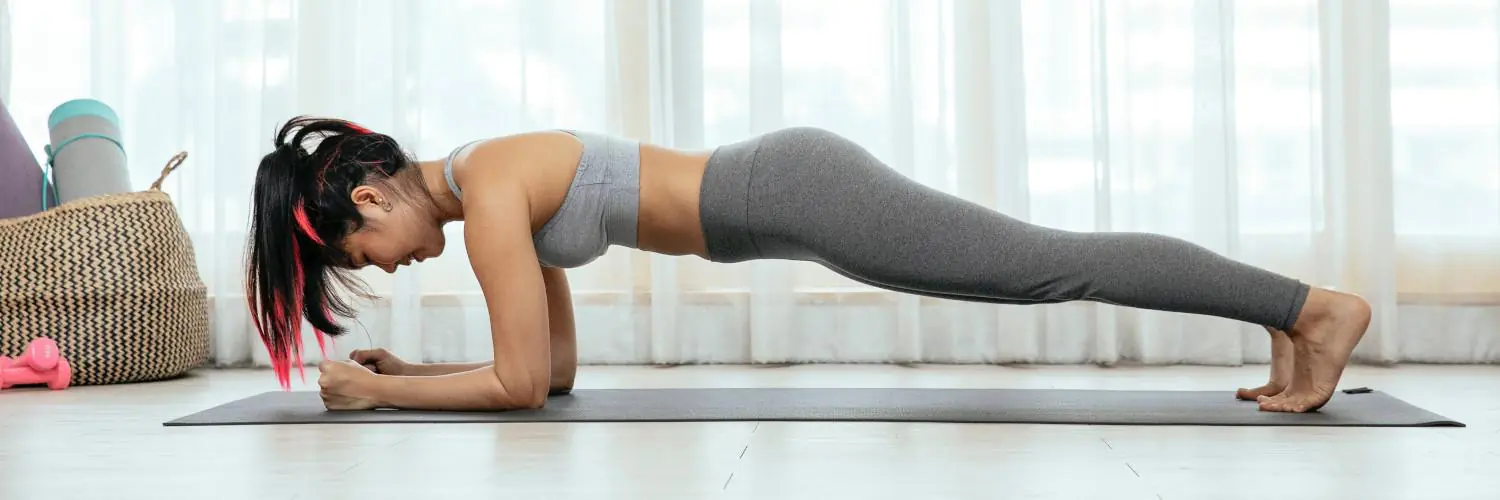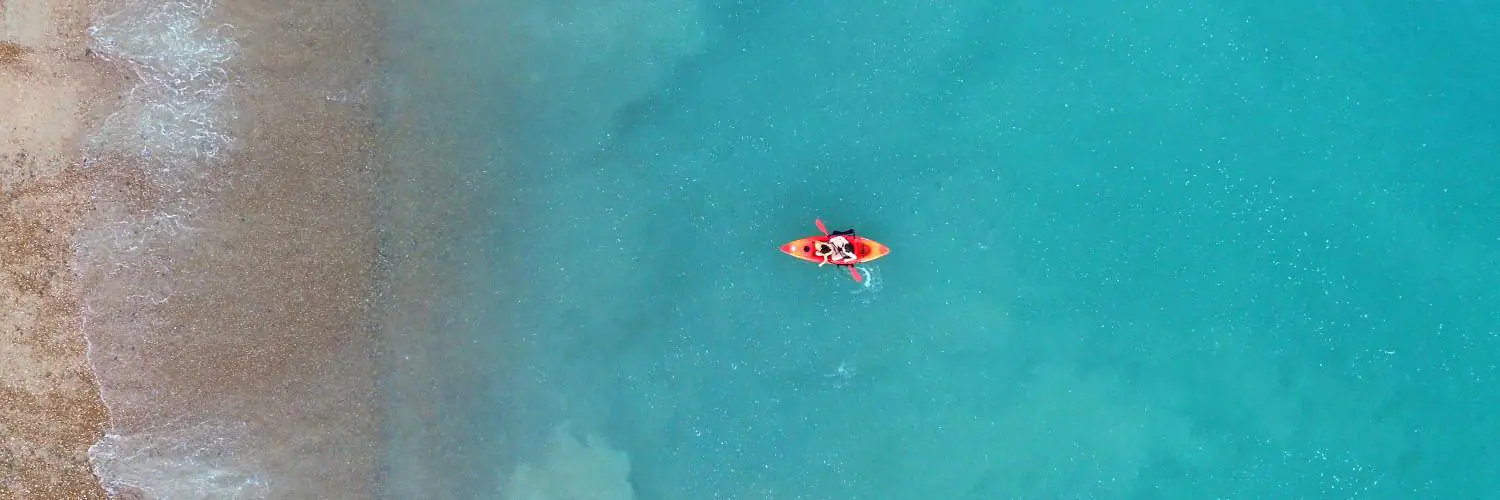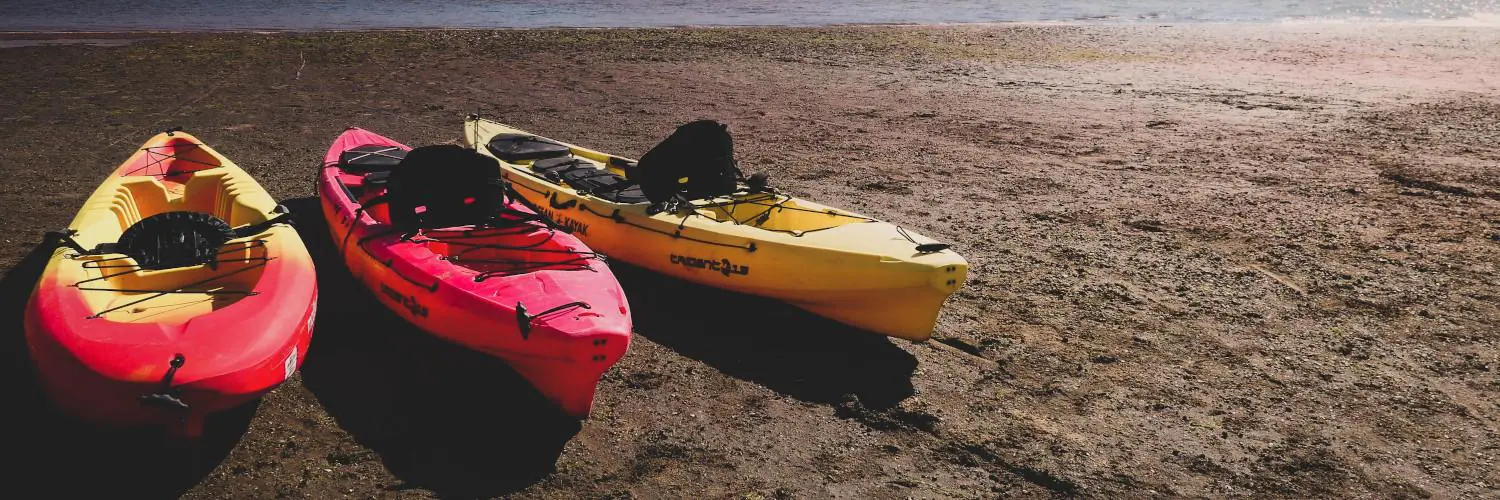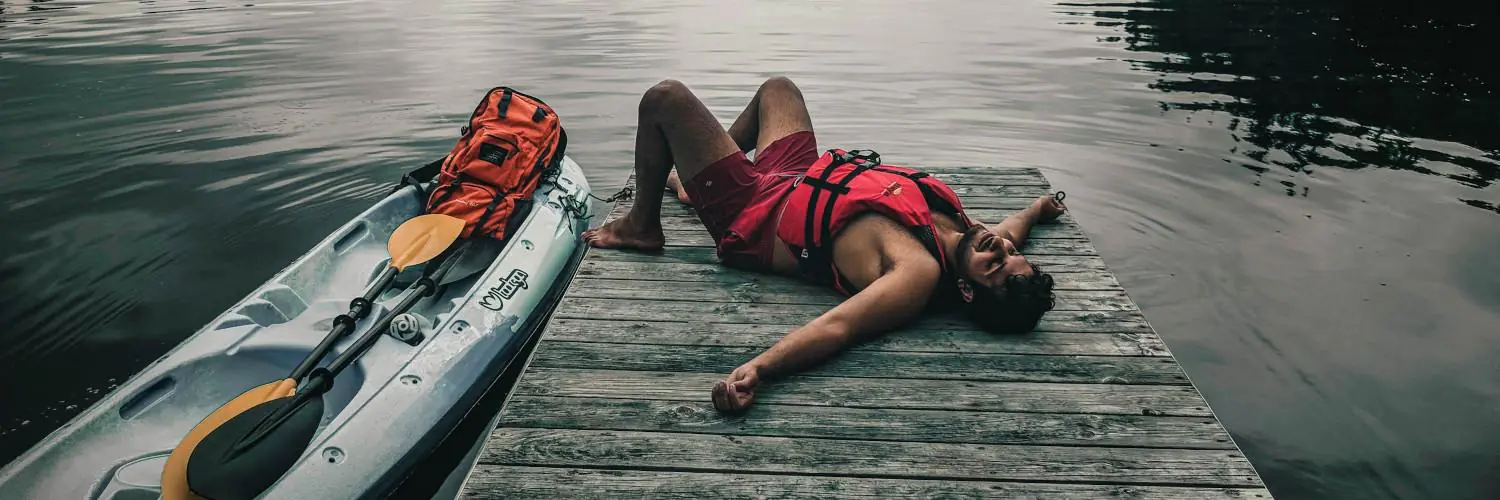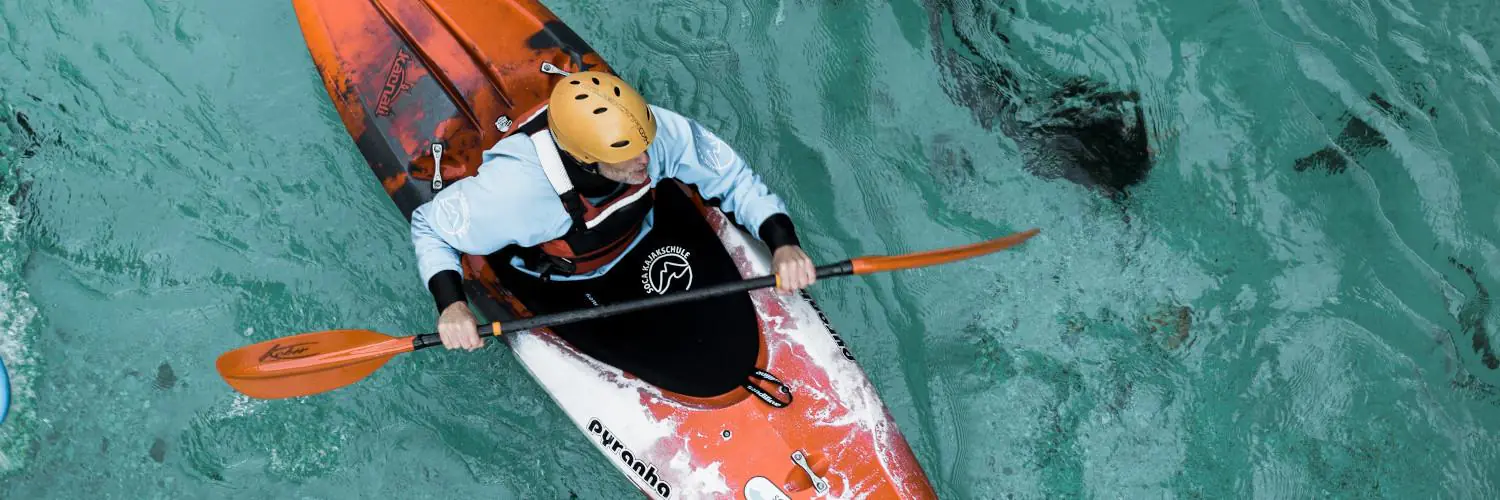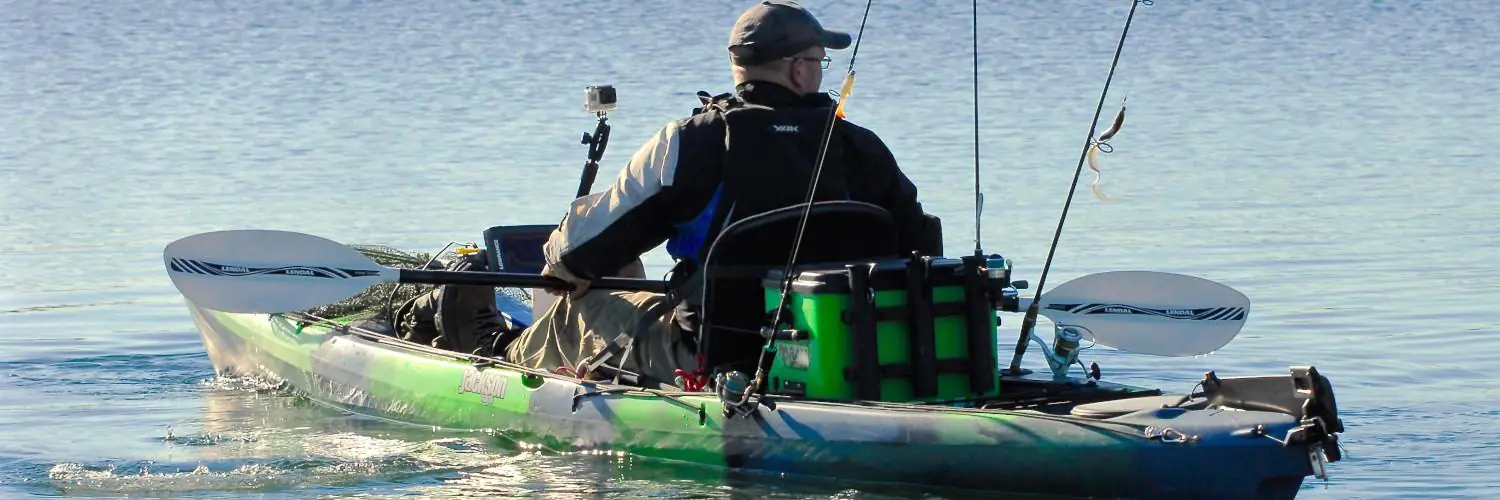Sea kayaking is a thrilling water sport that demands strength, balance, and endurance. To excel on the water, paddlers need to train both on and off their kayaks. Proper exercises can boost performance, reduce injury risk, and make kayaking more enjoyable.
Key exercises for sea kayakers include core strengthening, upper body workouts, and balance drills. Core exercises like planks and Russian twists help maintain stability in choppy waters. Upper body moves such as lat pulldowns and tricep dips build the muscles used for paddling. Balance exercises prepare kayakers for the constant adjustments needed while on the water.
Paddlers can also benefit from mimicking kayaking motions in their workouts. This helps build muscle memory and improves technique. A mix of strength training, cardio, and flexibility work creates a well-rounded fitness plan for sea kayakers of all levels.
Table of Contents
Fundamentals of Kayak Training
Kayak training builds strength, endurance, and technique for better paddling performance. A good program targets key muscle groups and improves overall fitness for kayaking.
Understanding Kayak Fitness Components
Kayaking uses many muscle groups. Core strength is crucial for stability and power transfer. Strong arms, shoulders, and back muscles help with paddling.
Good kayakers need muscular endurance to paddle for long periods. Cardiovascular fitness also matters for longer trips. Balance and flexibility aid in boat control.
Key areas to focus on:
- Core (abs, obliques, lower back)
- Upper body (shoulders, arms, chest)
- Lower body (legs, hips)
- Cardiovascular system
Establishing a Kayak Training Program
A kayak training program should mix on-water practice with land exercises. Start 6-8 weeks before kayaking season or a big trip.
Sample weekly plan:
- 2-3 kayaking sessions (1-2 hours each)
- 2 strength training workouts
- 1-2 cardio sessions
- 1 flexibility/yoga session
Include rest days for recovery. Gradually increase workout intensity and duration. Mix up exercises to prevent boredom and target different muscles.
Land exercises that help kayakers:
- Planks
- Russian twists
- Pull-ups
- Rowing machine
- Squats
Always warm up before exercising. Cool down and stretch after workouts. Listen to your body and adjust as needed.
Developing Core and Stability
A strong core and good balance are key for sea kayaking. These skills help paddlers move smoothly and stay safe on the water.
Core Strengthening Exercises
Planks are great for building core strength. Hold a plank position for 30 seconds to start. As you get stronger, try to hold it longer.
Russian twists target the obliques. Sit on the floor with knees bent. Lean back slightly and lift your feet. Twist your torso from side to side.
Crunches work the abs. Lie on your back with knees bent. Lift your shoulders off the ground, then lower back down.
Bird dogs help with balance and core stability. Start on hands and knees. Lift one arm and the opposite leg. Hold for a few seconds, then switch sides.
Balance and Stability Workouts
Practice balancing on one foot. Start with 30 seconds per leg. Add arm movements to make it harder.
Use a stability ball for seated exercises. Sit on the ball and lift one foot off the ground. Try to stay balanced.
Try yoga poses like tree pose or warrior III. These improve balance and work the core at the same time.
Stand on a BOSU ball or wobble board. This mimics the uneven surface of a kayak. Start with both feet, then try one foot at a time.
Do kayak-specific moves on land. Mimic paddle strokes while standing on one leg. This trains your body for on-water balance.
Upper Body and Paddling Strength
Strong upper body muscles are key for kayaking. They help you paddle harder and longer. Good strength training can boost your performance on the water.
Targeting Key Muscle Groups
Kayaking uses many upper body muscles. The shoulders, back, and arms do most of the work. Focus on these areas in your workouts.
Shoulder presses build strong deltoids. These muscles help with paddle strokes. Pull-ups and lat pulldowns target the back muscles. They give you power to pull through the water.
Push-ups work the chest and triceps. These muscles help you push the paddle forward. Don’t forget about grip strength. It keeps you holding the paddle firmly.
Resistance Training Techniques
Use weights and bands to build strength. Start with light weights and do more reps. As you get stronger, add more weight.
Dumbbells are great for shoulder exercises. Try dumbbell rows to work your back muscles. Resistance bands are good for at-home workouts. They can mimic paddling motions.
Kettlebells offer a mix of strength and cardio. Swing exercises work many muscles at once. This is like the full-body motion of kayaking.
Mix up your workouts. Do some days with weights and others with bodyweight exercises. This keeps your muscles growing and helps prevent boredom.
Lower Body Conditioning
Strong legs and a stable core are key for sea kayaking. Proper lower body conditioning helps with balance, power, and injury prevention.
Exercises for Leg Strength and Support
Squats are great for building leg strength. Start with bodyweight squats, then add weight as you get stronger. Aim for 3 sets of 10-12 reps.
Lunges work each leg separately. Do forward and reverse lunges to target different muscles. Try 2-3 sets of 10 lunges per leg.
Leg presses on a machine can build overall leg strength. Start light and increase weight gradually. Do 3 sets of 8-10 reps.
Kettlebell swings work the legs and core together. Start with a light kettlebell and focus on form. Do 3 sets of 15-20 swings.
Injury Prevention and Mobility
Hamstring stretches help prevent tightness. Sit on the floor with legs straight and reach for toes. Hold for 30 seconds, repeat 3 times.
Leg raises strengthen the lower back and core. Lie on your back and lift legs slowly. Do 3 sets of 10-15 raises.
Ankle rotations improve mobility. Sit with legs extended and rotate ankles in circles. Do 10 rotations in each direction.
Calf stretches prevent cramping. Stand facing a wall, step one foot back, and lean forward. Hold for 30 seconds on each leg.
Complementary Training and Recovery
A well-rounded sea kayak training program includes more than just paddling. Cross-training and proper recovery are key for boosting performance and avoiding injuries.
Cross-Training for Enhanced Performance
Cross-training helps kayakers build all-around fitness and prevents burnout. Aerobic exercises like running, cycling, or swimming improve stamina and cardiovascular health. These activities work different muscle groups and boost overall endurance.
Strength training is vital for paddling power. Focus on exercises that target the core, back, shoulders, and arms. Planks, Russian twists, and push-ups are great bodyweight options. Free weights like dumbbells can add resistance for overhead presses and bent-over rows.
Interval training mimics the varied intensity of paddling. Try alternating between 30 seconds of high-intensity exercise and 30 seconds of rest. This builds both speed and endurance.
Recovery Tactics and Injury Prevention
Rest is crucial for muscle repair and growth. Take at least one full rest day each week. On active recovery days, do light activities like walking or gentle stretching.
Proper hydration helps muscles recover faster. Drink water before, during, and after workouts. Eat a balanced diet with lean proteins, complex carbs, and healthy fats to fuel your body.
Dynamic stretches before paddling warm up muscles and improve flexibility. Focus on the shoulders, back, and hips. After paddling, do static stretches to increase range of motion and reduce soreness.
Massage and foam rolling can help break up muscle knots and speed up recovery. Pay extra attention to your forearms, shoulders, and lower back.


